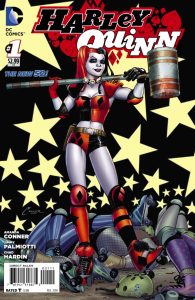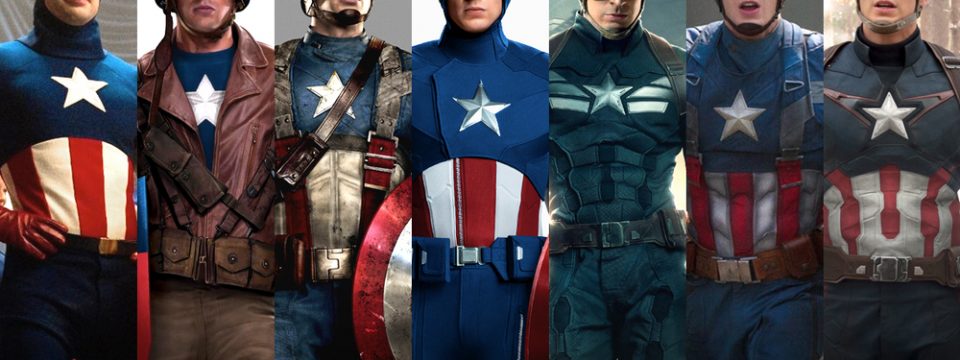On September 18, 2016, an article was published on the Comichron website detailing the rise in comic book orders. According to the article, “Since 1998, Diamond Comic Distributors has never shipped more than 10 million comic books to comics shops in a single month. That changed in August, as DC‘s “Rebirth” resulted in shipments of 10.26 million comics to retailers in North America.” The article also stated that the leading publisher in both dollars sales and unit sales was DC, with Harley Quinn #1 being the top-selling comic this year and nine other DC comics filling out the rest of the top ten.
So what does this mean? It means the comic book business, once thought to be a ‘dying industry’ in the same lien as newspapers and magazines, is thriving. But why?
On a surface level, the answer seems obvious: the resurgence in popularity of DC superheroes within pop culture and media has subsequently created a renewed interest in the books from whence the characters came. The statistics detailing DC’s exceptional popularity combined with the recent (re: within the past decade) onslaught of movies & TV shows featuring their characters (the Batman feature film franchise as well as the animated series, Suicide Squad, Justice League and its short-lived spin-off Young Justice, Teen Titans, Gotham, Green Lantern, Superman, The Flash, Watchmen, etc) and the lineup of DC characters whose movies/tv shows have been greenlighted for future production surely seem to support that.
But there is one facet of the question that is harder to answer. Why print comics?

Over the past decade, the internet has become an increasingly bigger player in the comic book world. Many comics of various styles and genres, such as Garfield, Girls with Slingshots, or Fruits Basket, are available online. Not only can people see the full comic on display, they can also go back and read any issues that have come before and, if the comic’s plot has finished, what comes next–a seductive concept similar to that achieved by forgoing live television every week in favor of Netflix binges after the finale has aired. What’s more, any information that can be gleaned from reading about a character in their comic can be found in great detail on a plethora of websites: the character’s Wikipedia page, the publisher’s wiki, Tumblr, fan forums, etc. With all of these resources that are 1) easily accessible, and 2) free, plus the constant stream of movies and television shows telling allegedly the same stories, one would expect printed comics to fade into obscurity. So why haven’t they?

We also know that accuracy is an important part of bringing print to screen, particularly with comics. For example, the care taken by the first Captain America film (left) to mimic even the smallest costume details in the comic in their live-action version. Not only does the coloring and design of the costume of the movie’s version on the right mimic the comic book version on the left, it also seems that the fit of the costume was done in such a way that Chris Evans, portraying Captain America, also seems to have the same height and build as his hand-drawn counterpart. There have been some small changes–bodice structure, the addition of shoulder straps–and it is worth noting that the costume changes more drastically once Captain America resurfaces in a different time period in the Avengers films. From this particular example, however, it is clear that during the adaptation process, considerable care is taken to make sure details are accurate as they can be and, if changes are made, that there is a reasoning provided (i.e the time shift for Cap).

Of course there are many examples of adapting a printed material that is not part of the comic genre into a feature film or TV show, but one issue here is that comic have an additional visual component that consequently introduces more opportunities for inaccuracy. After all, the stereotype that fans of comics will not only notice, but have an emotional response to changes made to print-to-screen adaptations is a stereotype for a reason: Recent Oscar-winner Brie Larson’s casting as Captain Marvel in a 2019 film was met with cries that, despite her acting chops, her age (26) made her too young to play the role of a woman who is in at least her thirties.
So, it is possible that the public’s need for accuracy in adaptations–and their need for fact-checking any possible inaccuracies–may play into the recent surge in print comic orders. Printed comics cannot be distorted as easily as online versions; the information cannot be manipulated on the page as it could on any forums or wikis. What’s more, the printed comic carries the sense that the information contained in it matches that contained in the original, even if that particular issue and/or story is far more recently written.
Another reason printed comics have made a comeback could be nostalgia. For many Americans, the characters that have begun gracing their screens were ones they cherished in print as youths. It is like how people may choose to scrapbook important parts of their lives and place more value on that than on, say, a Facebook photo album. Despite technology’s ever-growing presence in our lives, there is still something more substantial to us about a printed version of something that we have an emotional connection to. Also, when people want to relive the past, they want to do it in the same way they did in the past–flipping through the pages of a comic book instead of scrolling down a screen.
Perhaps it is both nostalgia and a desire for accuracy that compels Americans to keep buying printed comic books. Regardless, one thing is for sure: with the plethora of movies and TV shows based on comic books in our near future, the comic book industry doesn’t seem to be headed for a slump any time soon.
